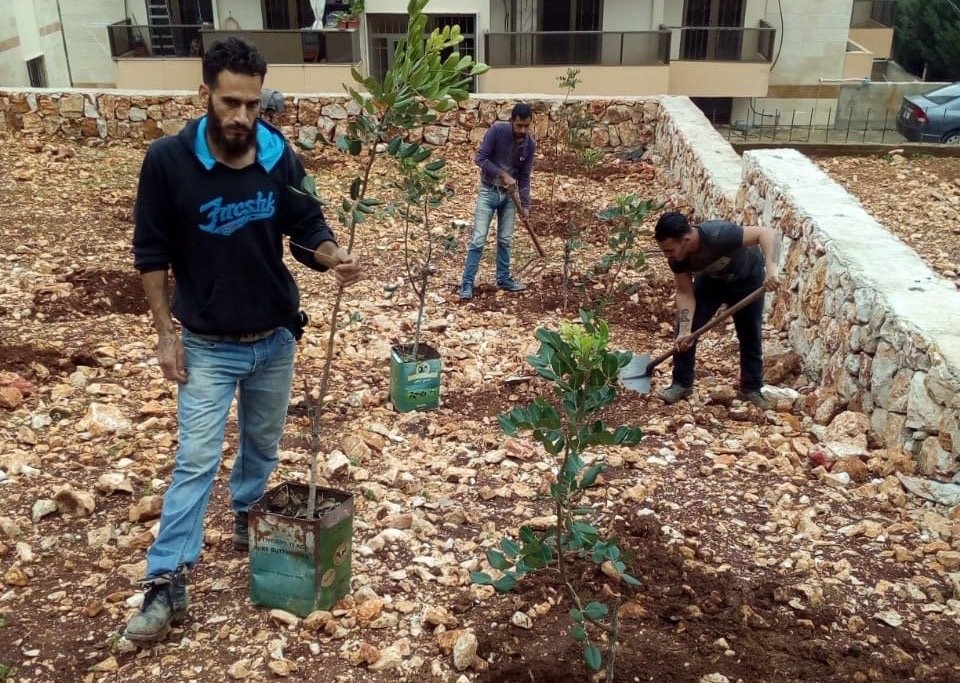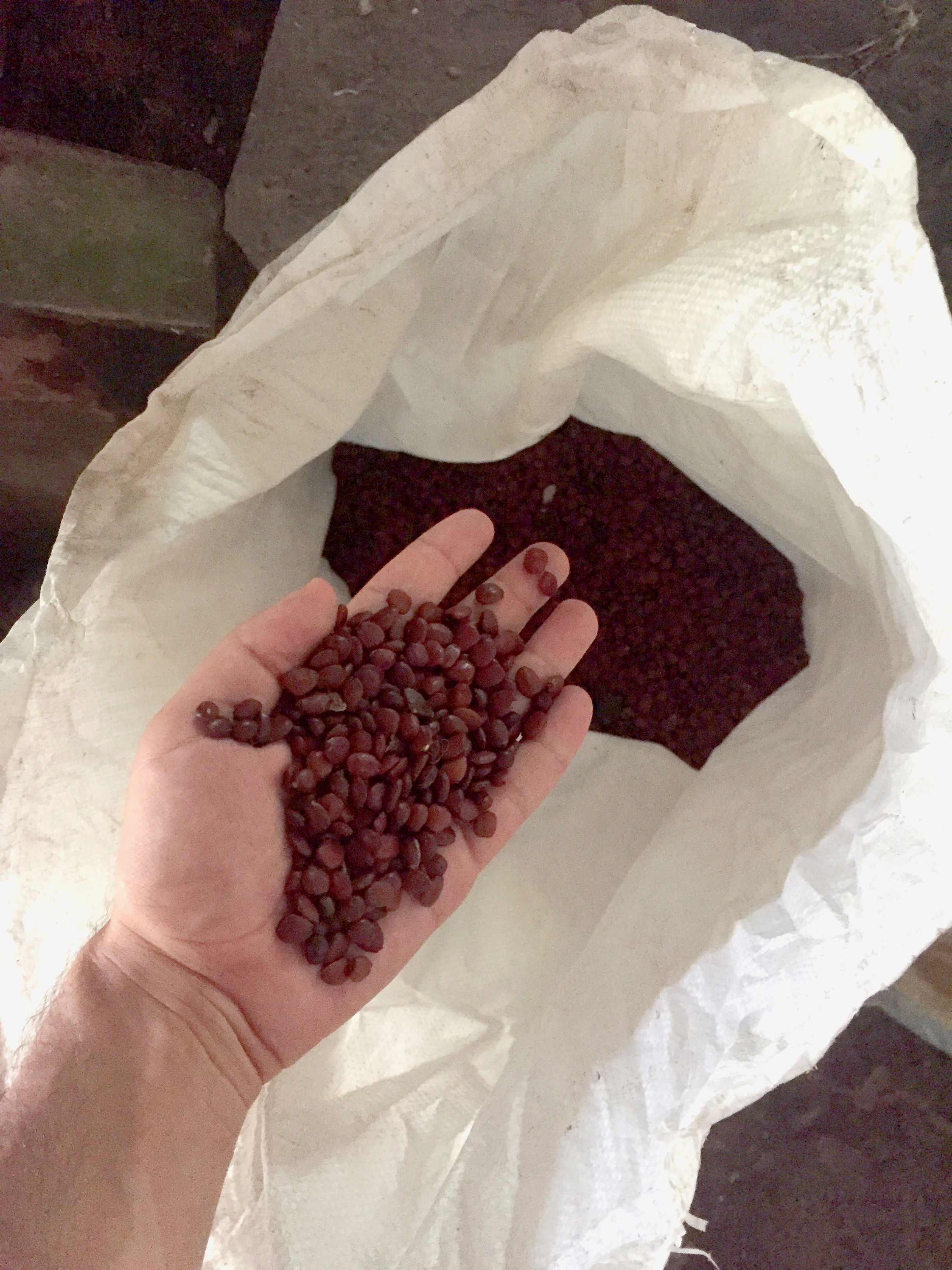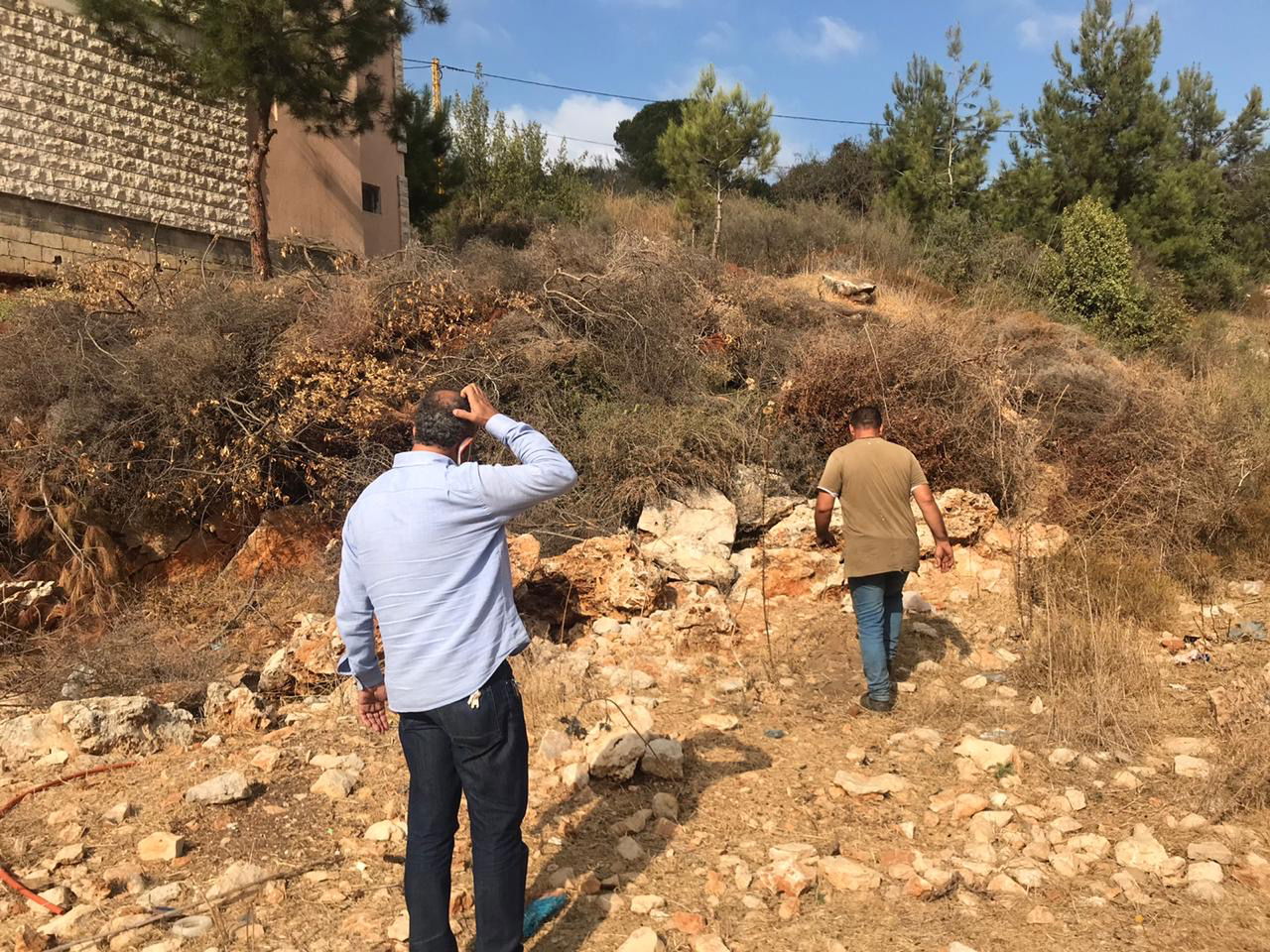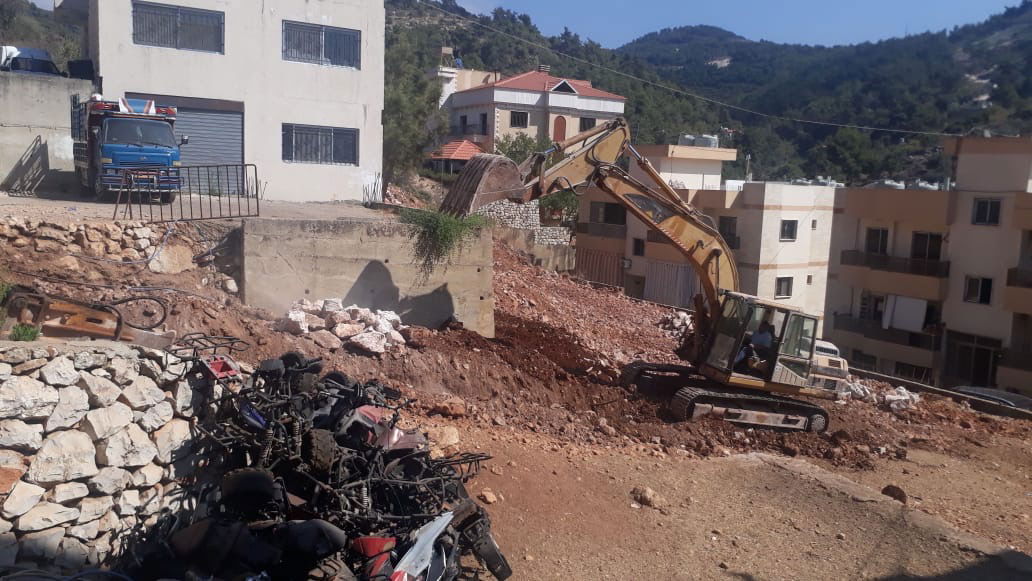Bourjein and the Extraordinary Carob Tree

In late 2019, when Diala Bou Orm and her daughter Samia watched the launch of Environment Academy on MTV’S Sar el Wa2et show, both mother and daughter knew they wanted to join the movement. Their village, Bourjein, is located in Iqlim Al Kharroub Caza, meaning“the area of the carob” for the trees which once proliferated around the villages of Lebanon’s lower coastal hills. But today the region’s name is almost a vestige of the past, with most green spaces and carobs lost. Diala and her team, Khodor, Zina, and Mohamad launched an effort, through the first round of Environment Academy, to bring the neglected carob back to its native habitat.
The Extraordinary Carob Tree
Carob trees (kharroub) have dotted lower Mount Lebanon’s slopes since antiquity, part of Lebanon’s traditional agro-silvo-pastoral system in which food crops, forests, and grazing herds of livestock complemented and benefited each other. Unlike other species common to the coastal lowlands, such as olive, oak, almond and pistachio, carob trees most frequently appeared in conjunction with human communities because people domesticated and cultivated the tree in low-intensity intercropping systems with other crops like grape, almond, and barley.

The carob tree has long played an essential role in Lebanon’s coastal lowland ecosystem. Especially when grown side by side with low-altitude conifers, carobs are very resistant to fires and drought. Their deep root system, and thick, water-holding plant tissue make the carob so fire-resistant that a team of scholars has proposed the tree as a potential “fire buffer” crop in the Mediterranean’s fire-prone areas.
Lebanon is in one of the world’s most vulnerable climate change hot spots. Temperatures are projected to increase by 1.2-1.17 degrees by mid-century and precipitation rates to decrease by 4-11% by 2100, which will make drought and heat waves more extreme. A native species like carob with such resilient properties could help strengthen our changing ecosystems. For EA co-founder Sammy Kayed, looking to the major monotheistic religions can provide insight about historical ecological knowledge. “Islam, Judaism, and Christianity all make mention of carob because it is one of those fruits that continues to give even in times of drought. It is seen as a very reliable food source.”
Not to mention that the carob’s multiple derivative uses–including molasses and syrups, high-quality animal feed, healthy sugars that don’t provoke insulin spikes and therefore can help with cardiovascular health, gastric issues and diabetes, and more recently, natural jellers and fillers in food. Though the carob is native to Lebanon, today it is imported from Cyprus and Greece. Even faraway countries with close-to-Mediterranean climates like Chile and Australia grow and export carob, as demand for carob-based foods, emulsifiers, thickeners, and pharmaceutical products rises.

Not so long ago, Bourjein’s inhabitants grew carob trees in their gardens, foraged for pods from the surrounding forests, and molasses factories were an important source of livelihoods. This changed after the 1914 famine, when the carob tree was uprooted to expand other forms of agriculture. When the civil war broke out, the harb al-jabal (mountain war) of 1983-1984 impacted many villages including Bourjein. Explosions and fighting destroyed Bourjein’s houses and, inhabitants estimate, 80% of its trees, carob being the main one. At the same time, Lebanon was undergoing profound demographic shifts with large portions of its rural populations moving to the cities. Not only did people abandon traditional livelihoods and thus carob cultivation, but intensive urbanization of the coastal zones, suburban sprawl, and unregulated construction since the end of the civil war destroyed the carob’s semi-natural habitat.
Bourjein and the Carob
The carob tree supported Bourjein’s inhabitants through the Lebanese civil war and periods of scarcity during the world wars. “Carob is a fruit that people can benefit from in any season,” said Diala Bou Orm. “When they lost everything in the wars, they replaced [food] for a long time with carob, and even started to give it away to villages around Bourjein for them to survive.” Not so long ago, every house grew carobs. “Because people depended on this tree, in the past you could find it in their gardens and in the forest,” said Diala. “We thought we would need a lot of time to convince people about the importance of this project, but maybe because everyone has grandparents, someone elderly in their house talking about the carob, they were more engaged than we thought.”
At first, the municipality offered a large piece of land adjacent to Bourjein that would fit an estimated 1500 trees, but upon investigation the team found a healthy coastal oak woodland on this land, not to be cut down. The only other piece of public land was a small plot near many houses, owned by the Agricultural Cooperative of Bourjein. This plot could only fit 50 trees, but as a silver lining, the team ended up creating an easily accessible green space in an otherwise completely urbanized village.
The carob micropark brought together stakeholders that usually operate independently. "There was a mindset change that somehow allowed collaboration between entities that do not talk to each other, and now there are trees in the middle of 4 or 5 buildings, which will allow kids and others to have an open space where they can breathe,” said Dr. Najat Saliba, EA co-founder.
The municipality flattened the site, removed rocks, brought soil, and the team planted the trees that are to be maintained by the Cooperative for a few years until they no longer need to be watered. The carobs will begin to give fruit in approximately five years, the revenues of which will be held by the municipality’s financial department for Bourjein’s youth. A clear agreement between the team, the cooperative, and the municipality ensures that the money gained from selling carob molasses will be allocated to young people who want to develop other environmental projects in the village.

“One of the reasons why it succeeded,” added Sammy Kayed, “was because of fantastic follow-up among the community team with the different conflicting stakeholders in the village, that they kept them updated, they kept addressing their concerns, they kept asking them what they would like to see and how they imagined their role.” Diala reconnected with people in Bourjein she had not seen in a long time, of all ages, to communicate about the project. “We were in the first round of EA so we learned a lot from each other,” she said. “As Lebanese we can help each other and do miracles, even if we don’t know each other.”
Diala is committed to growing and upscaling the project once Lebanon’s multiple crises subside and resources become more widely available. “Our project is not just to plant carob trees and that’s it,” she said. “It’s to build and regenerate the traditional concept.” In this sense the project has taken proportions larger than EA’s framework. “We are looking to distribute carob trees for every house and ask people to put this tree in their gardens for the new generations,” said Diala. “Every person should get used to looking into their garden, and seeing carob trees like in the past.”
Loss of natural heritage and loss of cultural heritage often represent two sides of one coin. Researchers Salma Talhouk et al. wrote about the carob’s conservation in Lebanon: “Unlike many forest tree species, the historic prevalence of carob was tightly linked to local communities. Today, this species will thrive again only if such links are restored and further developed to address the future needs of local communities and the landscape they belong to.” Challenging the myth of neat separation between nature and people, Bourjein's team brought different generations and groups together to breathe life back into the carob, the centerpiece of their new urban green space.
Allegra B.
Sources:
Chami et al, “Assessment of ancient carob germplasm of Lebanon by morphological traits,” Journal of the American Pomological Society, Vol 72, No 4, pp. 260-278
USAID Lebanon Climate Risk Profile https://www.climatelinks.org/sites/default/files/asset/document/2016_USAID_Climate%20Risk%20Profile_Lebanon_2.pdf
S.N. Talhouk; P. Van Breugel; R. Zurayk; A. Al-Khatib; J. Estephan; A. Ghalayini; N. Debian; D. Lychaa (2005). Status and prospects for the conservation of remnant semi-natural carob Ceratonia siliqua L. populations in Lebanon. February 2005, Forest Ecology and Management 206 (1-3), 0–59. doi:10.1016/j.foreco.2004.10.053
Srecec et al “Possible Role Of Carob Tree (Ceratonia Siliqua L.) In Fire Protection Of Agro-Forest Systems Of Croatian South Adriatic Islands Regarding The Similarities With Other Mediterranean Countries” International Multidisciplinary Scientific GeoConference : SGEM</a>; Sofia, Vol. 17, (2017). DOI:10.5593/sgem2017H/33
Mahfoud & Adijzian-Gerard, “Local adaptive capacity to climate change in mountainous agricultural areas in the eastern Mediterranean (Lebanon)” Climate Risk ManagementVolume 33, 100345 (2021)
France 24 Europe, “UN report says Mediterranean ‘climate change hotspot’ will see temps 20% higherthan global average” (06 August 2021) https://www.france24.com/en/europe/20210806-un-report-says-mediterranean-climate-change-hotspot-will-see-temps-20-higher-than-global-average